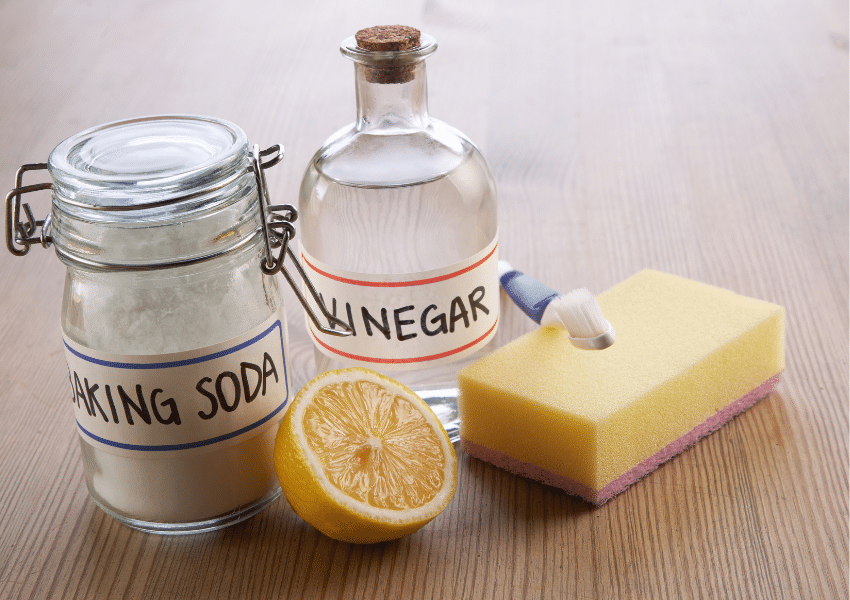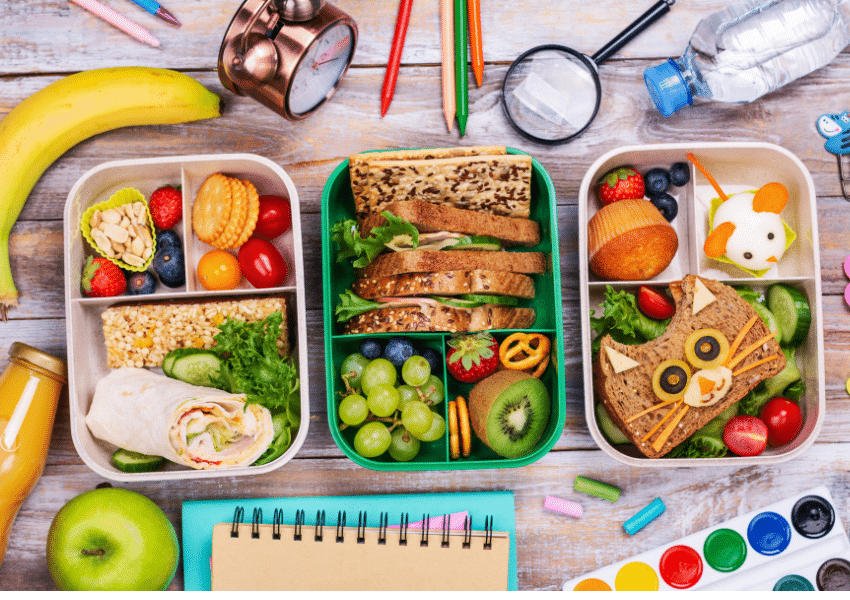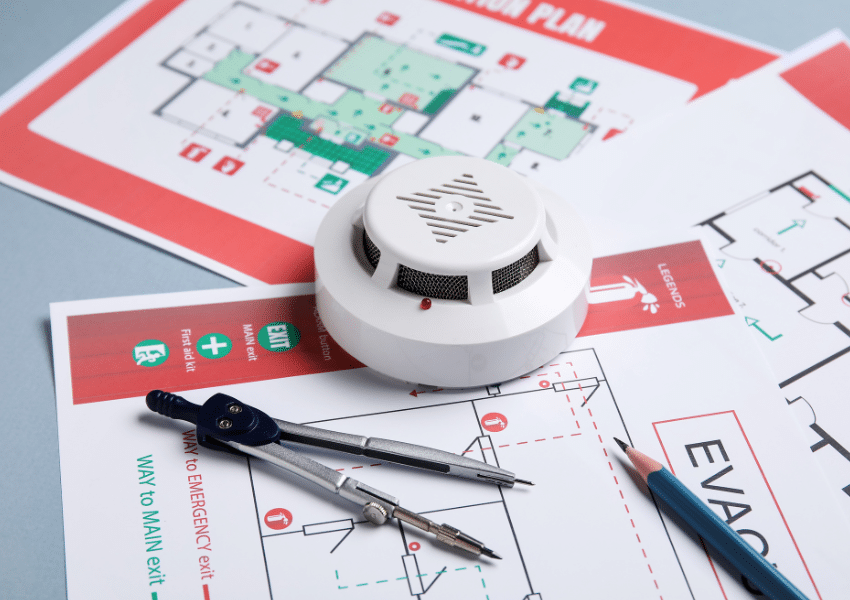
by California Casualty | Educators, Helpful Tips |
As a teacher, you don’t just teach lessons—you pour in your time, energy, and heart. The good news? Lots of businesses are ready to give you a gold star in return: discounts! From classroom supplies to cozy clothes, travel to tech, you can snag serious savings just by flashing your school ID. Call it your well-deserved “extra credit.”
We’ve made it easy—just click a store’s name to see the deal. And here’s a pro tip: many retailers roll out even bigger perks during Teacher Appreciation Week, so keep an eye out for those bonus savings.
Auto & Home
Packing up your home? Teachers save 20% on local moves and 15% on one-way moves.
America’s everyday heroes deserve savings every day. Educators (and your families) get special rates on home and auto insurance.
Catch some well-earned ZZZs with 10% off Purple’s famously comfy mattresses.
Enjoy peace of mind for less—teachers get 20% off Ring doorbell cameras.
Get Artsy
Stock up on glue sticks, glitter, and all things crafty! Teachers score 15% off their entire purchase—even sale items.
Bags & Backpacks
From colorful totes to sturdy backpacks, educators enjoy 10% off Vera Bradley favorites.
Bookworm’s Paradise
Join the invitation-only Educator Program for exclusive discounts on bestselling books and classroom materials.
Educators get 20% off in-store purchases plus free shipping online. Extra savings roll in during Educator Week!
Clothing that’s Classroom Chic
Look sharp for less with a 20% educator discount.
Save 15% online or in-store—prep-school style, anyone?
Enjoy 20% off every purchase from this California-based retailer.
For practical and timeless style, teachers get 10% off their order.
Save 15% on cool, casual staples in-store and online.
Go preppy with 15% off Vineyard Vines’ iconic styles.
Foodie Favorites
Teachers snag a membership for just $25 (regularly $60) and get a $10 reward to boot.
Get half off your first box, 10% off future boxes, free shipping on the first—and yes, dessert for life. Now that’s a sweet deal!
Sonic
Join the Sonic Teachers’ Circle for free deals and tasty discounts. Just enroll in the Sonic app and let the rewards roll in. Download the Sonic app, then create an account, go into Settings, tap the Profile icon, tap Account and select “I’m a Teacher” to enroll.
Shoes that Score an A+
Educators save big—30% off retail and 20% at outlet stores.
Comfy and quirky, Crocs offers 15% off full-priced styles.
Get 20% off Rothy’s stylish, sustainable shoes made from recycled materials.
Stock Up on Supplies
Earn 25% back in bonus rewards on qualifying purchases, plus a one-time 20% discount when you sign up.
Sharpen your savings with 10% off for educators.
The Reward a Classroom program at Staples enables parents to donate their Staples rewards straight to your classroom.
Target Circle Teacher Appreciation brings discounts across classroom supplies, food, home goods, clothes, and more.
Tech Time
Apple offers educator discounts on various products including Macs, iPads, iPhones, Apple watches, AirPods and more.
This online design program is 100% free to teachers. Create infographics, posters, video, and more.
Hewlett Packard offer savings of up to 40% on advanced technology.
Verizon offers discounted mobile phone plans and home internet pricing for educators.
Travel & Adventures
Enjoy $150 off your next sun-soaked getaway – don’t forget the sunscreen!
Teachers get a free annual pass with a 20% discount on onsite food and merchandise purchases. You also get 20% off tickets for friends and family.
Educators can save up to 25% on everyday base rates for rental cars and enjoy some bonus offers too!
K-12 teachers get complimentary entry to the visitor complex with an educator study pass.
Save when booking accommodations through Hotels.com—perfect for that much-deserved getaway.
Do you have a favorite teacher discount that’s not mentioned here? Share it in the comments.
This article is furnished by California Casualty, providing auto and home insurance to educators, law enforcement officers, firefighters, and nurses. Get a quote at 1.866.704.8614 or www.calcas.com.

by California Casualty | Helpful Tips |
Who says cleaning has to come in a plastic bottle filled with mystery chemicals you can’t even pronounce? With a few simple pantry staples—think vinegar, baking soda, and a lemon peel—you can whip up DIY cleaning products that are safe, budget-friendly, and surprisingly powerful. Bonus: they smell a whole lot better, too.
Pantry Powerhouses: The Magic Behind DIY Cleaners
Before diving into recipes, let’s get to know a few key ingredients that make these formulas shine:
- Baking Soda: Also known as sodium bicarbonate, this kitchen staple is not just for baking—it’s a powerful cleaner, too. Its mild abrasiveness makes it great for scrubbing, while its whitening, brightening, and deodorizing properties leave surfaces fresh and clean.
- Vinegar: An all-star degreaser and deodorizer, vinegar is a fantastic cleaner for glass and nonporous surfaces. It’s acidic, so avoid using it on natural stone like granite or marble, cast iron, stainless steel and unfinished wood—as it could corrode or damage them. Never mix vinegar with bleach (or you risk a dangerous reaction).
- Citric Acid: Found naturally in citrus fruits, citric acid is sold in powder form. It is excellent at cutting grease, removing stains, and tackling mineral deposits. It’s not good for all surfaces, though. Like vinegar, it is high in acidity. Skip citric acid on wood floors, electronics, copper, brass, and natural stone.
A Note on Mixing Vinegar + Baking Soda
That fizzy foam is fun and can help lift dirt—but baking soda and vinegar neutralize each other when combined. The leftover liquid isn’t a strong cleaner. Use them separately for best results.
Tried-and-True DIY Recipes
We researched some of the most popular do-it-yourself formulas for homemade household cleaners. Do you have a favorite that’s not on this list? Be sure to share it in the comments.
All-Purpose Cleaner
- ¼ cup Dawn dish soap
- ½ cup lemon juice
- ¾ cup vinegar
- ½ cup rubbing alcohol
- 1¼ cups water
Mix the ingredients above and store in a spray bottle. Pro tip: Infuse the vinegar with lemon, orange or grapefruit peels for 1–2 weeks for a fresh scent and extra grease-cutting power.
Alternatively, you can use a simpler version of just ½ cup white vinegar and 4 cups warm water for an all-purpose cleaner. Cleaning glass? Use equal amounts vinegar and water to remove fingerprints and smudges.
Carpet Freshener
- 2 cups borax
- 1 cup baking soda
- 10 drops essential oil
Mix the ingredients above and store them in an airtight container. When you’re ready to use it, sprinkle the mixture on your carpet. Let it sit 30 minutes, then vacuum. Not only does it freshen the room, it helps repel pests and deter rodents.
Carpet Stain Remover
- Baking soda
- 1 Tbsp. Dawn dish soap
- 1 Tbsp. white vinegar
- 2 cups warm water
Sprinkle baking soda on the stain, wait 10 minutes, then vacuum. Mix the dish soap, vinegar and water, and apply with a sponge. Use a clean cloth to blot the moisture. Repeat with sponging the water mixture and blotting until the stain disappears.
Dishwasher Detergent
- 8 oz castile soap
- 1 cup water
- 3 Tbsp. vinegar
Mix ingredients together and store in an airtight container. When you are ready to run the dishwasher, add 1 tablespoon per load.
Drain Cleaner
- ½ cup borax
- ½ cup salt
- 1 cup white vinegar
Mix the above ingredients into a paste and pour it into the drain. Let it sit 30 minutes, then flush with boiling water.
Fabric Softener
- 5½ cups water
- 15 oz. hair conditioner
- 2½ cups vinegar
- 20 drops essential oil (optional especially if your hair conditioner has a nice scent)
Mix and store. Use ¼ cup per wash during the rinse cycle.
Grout Cleaner
Add water to baking soda until it forms a paste. Apply that paste to the grout. Let it sit 15 minutes, then scrub with a stiff brush and rinse with water.
Hardwood Floor Shine
- Bucket of warm water
- Few drops natural dish soap
- 1 tsp castile soap or olive oil
Mop as usual to restore the shine without damaging the wood.
Soft Scrub Cleanser
- 1½ cups baking soda
- ½ cup liquid laundry soap
- 10 drops tea tree, lavender, or lemon essential oil
Mix into a paste and store airtight. Rehydrate with water if it dries.
Toilet Bowl Cleaner
- 1 cup baking soda
- ¼ cup citric acid
- ½ cup vinegar
Mix the dry ingredients—the baking soda and citric acid. Sprinkle that powder mixture in the toilet bowl. Then, add vinegar to the bowl, which will cause it to foam. Scrub and then flush.
Cleaning and Protecting
For some additional inspiration, check out our blog on 5 Hacks for Cleaning Your House While Everyone’s Home.
Of course, taking care of your home goes beyond keeping it clean—it’s about protecting everything you’ve worked so hard for. At California Casualty, we understand your home is your greatest investment, and we’re here to make sure it’s fully protected with the right insurance coverage.
This article is furnished by California Casualty, providing auto and home insurance to educators, law enforcement officers, firefighters, and nurses. Get a quote at 1.866.704.8614 or www.calcas.com.

by California Casualty | Health, Helpful Tips |
Packing a lunch isn’t just about sandwiches and snacks—it’s a little daily opportunity to say, “I love you.” From notes that spark giggles to colorful, kid-approved meals that secretly pack in nutrition, your child’s lunchbox can become a tiny treasure chest of connection, creativity, and fun. Let’s explore playful ideas that make lunchtime a moment to smile, bond, and maybe even start a new family tradition.
Make Presentation Part of the Fun
Children eat with their eyes first, so the way food is presented can be just as important as what you pack. A lunchbox with a little personality is more exciting and encourages kids to try different foods.
- Cookie cutters for fun shapes: Cut sandwiches, cheese, or melon into stars, hearts, or animals. Even picky eaters are more likely to nibble on something shaped like a dinosaur.
- Bento-style compartments: Separate each item into neat sections. Not only does this make food look appealing, but it also prevents flavors from mingling (a lifesaver for kids who don’t want their carrots touching their crackers).
- Silicone baking cups: Bright and reusable, these cups help organize food and add a pop of color.
- Food on skewers: For older children, try non-sharp skewers or toothpicks to make fruit kebabs, veggie stacks, or mini sandwich bites. They feel like party food!
- A rainbow of colors: Add natural vibrancy with strawberries, blueberries, carrots, cucumbers, and yellow peppers. A colorful plate looks more appetizing and signals variety.
- Kid-friendly packaging: Avoid items that are difficult to open. A lunchbox should be a moment of joy, not frustration.
Tip: Pack bite-sized portions that engage all the senses—something crunchy, something smooth, something juicy, and contrasting textures like apple slices with cheese cubes.
Healthy Meals Kids Actually Want to Eat
Nutritious doesn’t have to mean boring. The key is balancing wholesome ingredients with kid-approved flavors. Here are some ideas that bridge both worlds:
- Pinwheel wraps: Spread hummus or cream cheese on a tortilla, layer with veggies or deli meat, roll it up, and slice into colorful rounds.
- Sandwiches with personality: Add banana “eyes” with blueberry pupils to a peanut butter and jelly sandwich. Try a carrot “nose” and a red pepper “smile” for a cheese sandwich. Hold them in place with a dab of cream cheese or peanut butter. Your child won’t forget the day their sandwich grinned at them.
- Stuffed pitas: Fill with lean protein and crunchy veggies for a handheld meal that feels different from the usual sandwich.
- Mini charcuterie board: Cheese cubes, crackers, rolled turkey slices, grapes, and pretzels. It’s snacky, customizable, and fun to assemble.
- Veggies and dip: Pair carrots, celery, or snap peas with hummus, guacamole, or ranch for dipping.
- Mini muffins: Bake ahead with fruit or shredded zucchini and carrots. They feel like a treat but sneak in extra nutrition.
- Yogurt parfaits: Layer yogurt, fruit, and granola in a small container for a colorful surprise.
- Mini bagels: Spread with cream cheese, nut butter, or avocado for a satisfying bite.
- Pasta salad: Toss whole-grain pasta with veggies, cheese, and a drizzle of dressing for a hearty option.
Tip: Involve your kids in the process: create a list of “parent-approved choices” and let them pick their favorites for the week. When children help pack their own lunches, they’re more likely to eat and enjoy them.
Jokes, Puns, and Motivational Messages
Lunchtime is a great time to connect with kids may be tired, missing home, or needing a boost of encouragement. A short note tucked into the lunchbox can do wonders. Kids love humor, and a silly joke can turn an ordinary lunch into a giggle break. Or maybe your child would love a pep talk before that big spelling test.
Jokes
Fold the paper so the joke is on the outside and the punchline is hidden inside. Here are some of our favorites.
Who is the king of the pencil case? The ruler.
- What did the ice say to the water? I’m cooler than you.
- What did the paper say to the pen? You have a good point.
Puns
As kids expand their language skills, they find delight in word play. Here are some food-inspired puns you can try.
Orange you glad it’s lunch time?
- Donut forget how awesome you are.
- Lettuce celebrate how great you are.
Motivational Messages
Kids of all ages appreciate messages of support. Share a favorite quote or saying that says you’ve got this.
If kids were flowers, I’d pick you every time.
- Today is a great day to learn something new.
- “The future belongs to those who believe in the beauty of their dreams.” – Eleanor Roosevelt
And More…
- Keep it short and sweet: A sentence or two is enough.
- Use color: Bright pens, stickers, or doodles make your message stand out.
- Think outside the paper: Write on a cupcake wrapper, a disposable container or on the outside of a banana.
- Try a game to make it interactive. Draw a simple maze or a word search. Just make sure to include a crayon.
Tip: To save time, write a batch of notes in advance. That way, when mornings get hectic (as they often do), you can simply slip one in.
Make It a Family Tradition
Lunchbox love doesn’t have to be just for the little ones. As kids grow, the ways you connect can evolve. Maybe your middle schooler prefers a thoughtful quote, or your high schooler enjoys a funny meme tucked in with their lunch. The point is the same: you’re reminding them that you care.
So, the next time you’re packing a lunch, think of it not as a chore but as a chance to sprinkle in a little joy. After all, love is the most important ingredient you can pack.
This article is furnished by California Casualty, providing auto and home insurance to educators, law enforcement officers, firefighters, and nurses. Get a quote at 1.866.704.8614 or www.calcas.com.

by California Casualty | Helpful Tips, Homeowners Insurance Info, Safety |
When fire breaks out, every second counts. Knowing exactly what to do—and what to avoid—can mean the difference between safety and tragedy. Whether you’re at home, at work, or out in public, understanding how to respond in a fire emergency gives you the power to act quickly, protect loved ones, and make it out safely.
Understanding the Phases of a Fire
Before you can respond effectively, it helps to understand how a fire behaves. Fires move through distinct phases, though the timing can vary depending on what is burning and where the fire occurs:
- Incipient Phase – This is the very beginning, when the fire first ignites. If detected quickly, it may still be possible to put it out safely with the right tools.
- Growth Phase – Flames spread, heat builds rapidly, and conditions begin to change. This is when a small fire can suddenly get out of control.
- Fully Developed Phase – At its peak intensity, a fire consumes all available fuel, producing thick smoke and toxic gases. Escape is the only safe option.
- Decay Phase – As the fire runs out of fuel, flames and heat decrease, but smoke and gases can still be dangerous.
What to Do in a Fire Emergency
When you encounter fire, your actions need to be quick, calm, and deliberate. Here are the key “Do’s” to remember:
1. Act Early if It’s Safe
If you catch the fire in its earliest stage (the incipient phase), and you have the right type of extinguisher, you may be able to stop it from spreading. Always aim the extinguisher at the base of the flames, not the middle or top.
In the kitchen:
- Turn off the heat source.
- Smother small stovetop flames with a metal lid, baking sheet, or fire blanket.
- Use baking soda or salt on grease fires—but never water or flour.
- Follow these tips for other ways to put out a fire.
- If a fire starts inside your oven or microwave, keep the door closed. The lack of oxygen will usually cause the fire to die down.
If the fire is spreading quickly, do not try to fight it. Get out immediately and call 911.
2. Get to Safety
Plan for at least two exits from every room in your home. Fires often make the most obvious path unusable. Heavy smoke can quickly disorient you, so it helps to know the layout of your home by memory. Practice fire drills with your family so that everyone knows how to react without hesitation.
3. Stay Low
Smoke rises and carries carbon monoxide, which can make you dizzy or even cause unconsciousness. Crawling low to the ground gives you cleaner air to breathe and increases your chance of escape.
4. Stop, Drop, and Roll
If your clothing catches fire, don’t run. Running only fuels the flames. Instead, stop, drop to the ground, and roll back and forth while covering your face. This smothers the flames and helps prevent serious injury.
5. If You’re Trapped
Sometimes escape isn’t possible. If you can’t get out:
- Stay away from doors that are hot to the touch.
- Block smoke by placing wet towels or blankets along the bottom of doors.
- Open windows cautiously, crouching down to avoid rising smoke and heat.
- Signal for help by waving a flashlight or cloth out the window.
What NOT to Do in a Fire Emergency
Just as important as knowing what to do is knowing what not to do. Certain instinctive reactions can actually make things worse:
- Don’t use elevators. Fires can cause electrical failures or trap you inside. Always use the stairs.
- Don’t pour water on grease fires. Water splashes burning oil and creates explosive steam.
- Don’t pour flour on a fire. Flour is combustible. Stick with baking soda, salt, or a fire extinguisher.
- Don’t use water on electrical fires. Water conducts electricity and can cause electrocution.
- Don’t fan flames. Adding oxygen only makes a fire grow.
- Don’t stand too close or reach over flames. Loose clothing can ignite quickly.
- Don’t move burning objects. This can spread flames to new areas.
- Don’t aim a fire extinguisher at the flames themselves. Remember: always target the base of the fire.
Preparing Before a Fire Happens
While these tips can help in the moment, preparation is your best defense. Here’s how to protect yourself and your loved ones:
- Install smoke alarms on every level of your home, especially near bedrooms. Test smoke detectors monthly and replace batteries at least once a year.
- Create and practice a fire escape plan with your household. Make sure every member—children included—knows how to get out and where to meet once outside.
- Keep fire extinguishers accessible. Place them in the kitchen, garage, and near exits. Learn how to use them before an emergency arises.
- Understand the common causes of fires so you can take steps to fireproof your home and minimize these risks.
- Know your insurance coverage. Even when you do everything right, fires happen. Having the right coverage can make the recovery process easier and less stressful.
This article is furnished by California Casualty, providing auto and home insurance to educators, law enforcement officers, firefighters, and nurses. Get a quote at 1.866.704.8614 or www.calcas.com.

by California Casualty | Helpful Tips, Pets |
Ever wonder what’s going on behind those puppy-dog eyes or that flick of your cat’s tail? Spoiler alert: your pet is talking to you all the time. From happy wiggles to warning growls, our furry friends have a whole language of their own. The good news? Once you know how to decode it, you’ll unlock a secret world of wagging, purring, and even side-eye that reveals exactly what your dog or cat is really saying.
Dogs: The Masters of Expression
Dogs are an open book—if you know how to read the pages. Their eyes, ears, tails, and even fur are constantly sending signals about how they’re feeling.
Eyes
- A relaxed dog has soft, almond-shaped eyes that may even squint slightly.
- If their eyes are rounder than usual or showing a lot of white (often called “whale eye”), they may be stressed or on edge.
- Dilated “glassy” pupils can mean fear or high arousal.
- Dogs that avoid looking at you directly are feeling uneasy. They also may be resource guarding food or a toy.
- Calm, soft eye contact shows trust. Prolonged, hard stares, however, are a challenge—best to avoid.
Ears
- Forward-facing ears mean interest and alertness (even floppy-eared pups will shift the base forward).
- Slightly back often means relaxed and approachable—especially if paired with a wagging tail.
- Pinned flat against the head? That’s a sign of fear, nervousness, or submission.
Mouth
- A relaxed dog usually has a slightly open mouth with upturned corners.
- Closed, tight lips or pulled-back corners can signal fear.
- Wrinkled muzzle and bared teeth = warning: back off.
- Some dogs even show a “submissive smile” (teeth showing with wagging tail, lowered head, squinty eyes).
- Yawning or lip licking can be early signs of stress.
Tail
- Neutral (in line with the spine) = relaxed.
- High and stiff = excitement or agitation.
- Tucked between legs = fear or discomfort.
- Loose, wagging tail = friendly—but always check the rest of the body for context.
Vocalizations
- Barking can mean joy, fear, or alertness—tone and pitch matter.
- Whining often signals a need for attention, comfort, or even pain.
- Yelps = pain.
- Growling = a clear warning.
- Howling may be a response to sounds or a sign of anxiety.
Posture & Movement
- Play bow (front end down, rear up, wiggly movements) = “let’s play!”
- Rolling on back can mean trust—but it’s not always an invite for belly rubs.
- Frozen posture = fear or guarding behavior.
- Trembling may signal anxiety but also check for medical issues if it’s frequent.
- Raised hackles (the hair along the back) don’t always mean aggression—they can signal fear, stress, or excitement.
Pro Tip: Keep your pup mentally engaged with Brain Games for Dogs.
Cats: The Subtle Storytellers
Cats can be a little harder to read than dogs, but once you know the signs, their signals are just as clear.
Eyes
- Slow blinks are the ultimate “I love you.”
- Dilated pupils = excitement, fear, or aggression.
- Constricted pupils = tension or aggression.
- A hard stare can mean dominance or a brewing fight.
- A sideways glance can mean trust and comfort.
Ears
- Forward and relaxed = curious, content.
- Flat against the head = annoyed, scared, or defensive.
- Constant swiveling means they’re listening intently.
Tail
- Upright with a slight curve = happy, confident cat.
- Puffed up = scared or upset.
- Flicking or thrashing = irritated—time to back off.
- Low and tucked = anxious or frightened.
Whiskers & Fur
- Forward whiskers = curiosity and excitement.
- Pulled back whiskers = fear.
- Fur standing on end (with arched back) = threatened or defensive.
Vocalizations
- Growls, hisses, yowls = “back off.”
- Purring usually signals contentment—but sometimes pain.
- Trills (that high, chirpy sound) = friendly greeting.
- Meows and chirps can mean anything from hunger to frustration to simple “chattiness.” If it’s constant, check with your vet to rule out meows due to pain.
Posture & Behavior
- Play mode: crouching, pouncing, bringing you toys.
- Crouched ball: ready to spring—anxious or fearful.
- Belly up: trust, but not always an invitation for tummy rubs. The cat could latch onto your well-meaning hand with its claws and teeth.
- Arched back with fur up: fear or aggression.
- Cats often point their whole body toward where they want to go—it’s their way of saying, “excuse me, I’m headed this way.”
Building a Better Bond
Learning to “speak” dog and cat doesn’t just prevent misunderstandings—it strengthens the bond you share. You’ll know when your dog really wants to play, when your cat is overstimulated, and when either one needs a little space. Over time, you’ll find yourself communicating so well, it’ll feel like you and your furry friend share your own secret language.
We love our pets, and part of caring for them means protecting their health and wellbeing. Make sure your dog or cat is fully protected with pet insurance. Looking to save on veterinary care? Check out our blog on 9 Ways to Save on Your Vet Bill.
This article is furnished by California Casualty, providing auto and home insurance to educators, law enforcement officers, firefighters, and nurses. Get a quote at 1.866.704.8614 or www.calcas.com

by California Casualty | Helpful Tips, Homeowners Insurance Info |
That picture-perfect porch or freshly painted shutters might catch your eye but looks aren’t everything when it comes to house hunting. The smartest buyers dig deeper, considering how a home’s layout will work day-to-day, the strength of the neighborhood, and how well the property will hold its value over time. After all, the best home isn’t just the one that charms you at first glance—it’s the one that pays off in the long run.
Here are some key things to look for beyond curb appeal when you’re searching for your next home.
Natural Light
A bright, airy space feels welcoming—and it can save you money on utilities by cutting down the need for artificial lighting. As you walk through a potential home, notice the direction of the windows and how the sunlight filters into each room. Morning light may make a kitchen cheerful, while evening sun could make a family room glow. Don’t just admire the view—test the windows. If they stick or are difficult to open, it might indicate foundation or insulation issues. Outdated windows may also need replacing, which can be a costly project.
Storage Space
It’s easy to fall in love with a home during a tour, only to realize later that there’s nowhere to put your holiday decorations, sports equipment, or bulk groceries. Storage goes beyond closets—think attic, basement, garage, pantry, and even built-in cabinetry. Ask yourself whether the available storage fits not only your current lifestyle but also your future needs. After all, homes have a way of filling up quickly.
Layout and Flow
The layout of a home impacts your daily routine more than you might realize. Picture yourself moving through the space: is the kitchen conveniently located near the dining area? Is there room to entertain friends, host family gatherings, or create a home office if you need one? Pay attention to how the rooms connect. An awkward floor plan can make everyday life feel more complicated, while a well-designed layout adds comfort and efficiency.
Noise Levels
Silence is golden—or at least, peace and quiet can be. While touring, pause and simply listen. Do you hear traffic, barking dogs, or nearby train whistles? Inside, thin walls may let in sound from neighbors or other parts of the house. For a more complete picture, ask future neighbors about noise at different times of day. What’s peaceful during an afternoon showing might sound very different on a Saturday night.
Odors and Air Quality
Your nose knows. Strong odors can signal deeper problems, like water damage, frequently flood basements, mildew, or smoke. Musty smells might point to leaks or poor ventilation, while pet accidents or cigarette smoke can be stubborn to remove. Air quality is not only a comfort issue—it’s a health consideration. If something smells off, take it seriously and investigate further.
Functionality and Condition
Think about whether the home is move-in ready or if you’ll need to tackle renovations before unpacking boxes. Check appliances to ensure they’re in working order. Test faucets, light switches, and outlets. Little things add up, and repairs can quickly turn a “dream home” into a financial drain if you’re not prepared.
Foundation and Structural Issues
A beautiful exterior can hide serious problems. Look for cracks in the basement walls or around the outside of the home. Uneven floors, sticking doors, or gaps in window frames can also be red flags. While not every crack is cause for alarm, structural concerns are best evaluated by a professional inspector before you make an offer.
Features and Maintenance
Extra features can be both a blessing and a burden. A spacious lawn may look like the perfect play area, but it will need regular mowing and landscaping. A pool can be fun in the summer, but it comes with ongoing maintenance, insurance considerations, and added liability. Consider carefully which features enhance your lifestyle and which may turn into costly chores.
School District
Even if you don’t have children, the quality of the local schools impacts property values. Homes in sought-after school districts tend to hold value better and sell more quickly. If kids are in your present—or your future—it’s an even more critical factor. Research test scores, extracurricular offerings, and community reputation to make an informed decision.
Long-Term Value
Buying a home is one of the largest investments you’ll make, so think long term. Look for homes in neighborhoods where property values are trending upward. A smart rule of thumb: buy the lowest-priced home in the best neighborhood you can afford. Over time, that decision could pay off with significant equity growth.
Budget and Affordability
Before you fall for any home, take a hard look at your budget. Factor in more than just the down payment and monthly mortgage. Closing costs, utilities, property taxes, home insurance, and future repairs all add to the bottom line. Don’t forget the cost of a professional inspection—it’s money well spent to avoid surprises later. Getting pre-approved for a mortgage helps you know exactly what you can afford, and protecting your investment with the right insurance ensures peace of mind.
The Bottom Line
Curb appeal matters—it’s often what draws you to a home in the first place. But the smartest house hunters know to dig deeper. Natural light, storage, layout, functionality, neighborhood trends, and long-term value all play a part in making a home the right fit. By asking the right questions and looking beyond the surface, you’ll set yourself up not only for a smooth move-in but also for a smart financial future.
This article is furnished by California Casualty, providing auto and home insurance to educators, law enforcement officers, firefighters, and nurses. Get a quote at 1.866.704.8614 or www.calcas.com.






